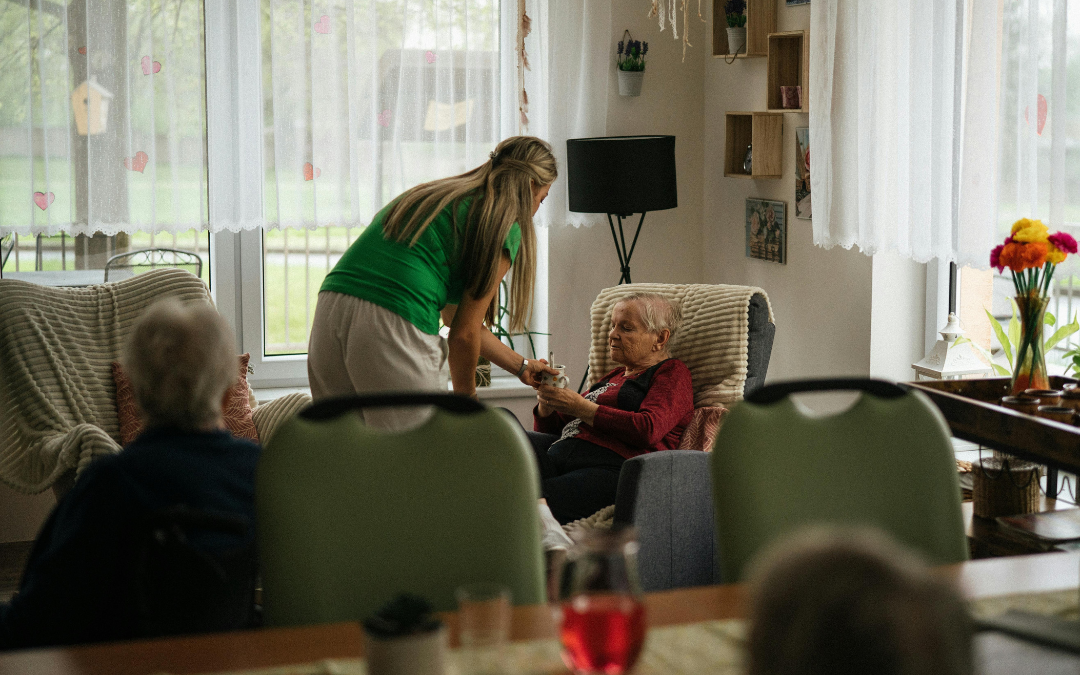Is there a magic number for caregivers per resident in memory care facilities like Valley Spring Memory Care? While many believe the proper ratio is crucial for quality care, particularly for individuals with dementia or Alzheimer’s, staffing decisions go beyond simple numbers. The ideal ratio depends on factors like resident needs, facility size, and state regulations, all of which influence the personalized attention and support residents receive. Understanding these dynamics helps ensure that every Valley Spring Memory Care resident experiences the highest standard of care in a safe and compassionate environment.
The Importance of Caregiver Ratios in Memory Care
When considering memory care, understanding the importance of caregiver ratios is essential for ensuring your loved one receives the best possible support. A balanced caregiver-to-resident ratio allows for individualized attention, which is vital in addressing the unique needs of those with dementia or Alzheimer’s. With adequate staffing, caregivers can engage residents in meaningful activities, enhancing their quality of life. Proper caregiver training also plays a significant role, as well-trained staff can respond promptly to emergencies and provide compassionate care. When caregivers have the time and resources to focus on resident engagement, it fosters a nurturing environment where your loved one can thrive. Ultimately, higher caregiver ratios lead to better care outcomes and a more supportive atmosphere for everyone involved. Additionally, specialized staff training ensures caregivers can recognize dementia signs and symptoms and provide tailored support to residents.
Minimum Staffing Ratios for Assisted Living Facilities
The concept of minimum staffing ratios for assisted living facilities is critical in ensuring that residents receive appropriate levels of care. While regulations vary by state, these staffing requirements typically mandate several caregivers per resident to maintain safety and well-being. For memory care communities, these ratios often need to be lower due to the increased support required for individuals with dementia. Adequate staffing allows for more direct supervision, personalized assistance, and emergency response, ensuring a higher quality of care. Facilities that meet or exceed these staffing ratios tend to offer a more structured and engaging environment for their residents, reducing caregiver burnout and improving overall resident satisfaction.
State Regulations for Memory Care
Each state has specific state regulations for memory care facilities that outline staffing requirements, caregiver qualifications, and care protocols. These regulations ensure that memory care communities provide a safe and supportive environment for individuals with cognitive impairments. Some states mandate a minimum staff-to-resident ratio, while others require ongoing staff training in dementia care. Understanding these regulations is essential when choosing a memory care facility for your loved one. Families can feel confident that their loved ones receive professional and compassionate care by ensuring compliance with state laws. Additionally, these standards help facilities maintain high-quality services while promoting best practices in dementia care.
Industry Standards for Caregiver-to-Resident Ratios
When considering caregiver-to-resident ratios, it’s crucial to understand the differences between daytime and nighttime standards. Typically, daytime ratios range from 1:5 to 1:6, while nighttime ratios may shift to 1:8 or 1:10 due to lower activity levels. Various factors, such as residents’ needs and facility services, can influence these ratios, impacting the quality of care. A well-trained staff is essential for adequate specialized support in memory care communities.
Daytime Caregiver Ratios
The typical daytime caregiver-to-resident ratio in memory care facilities ranges from 1:5 to 1:6, reflecting a standard to ensure residents receive the attention they need. During daytime staffing hours, caregiver availability is essential for meeting each resident’s unique needs. A balanced ratio promotes individualized assistance with daily activities, timely responses to emergencies, opportunities for social interaction, and enhanced quality of life for residents. Moreover, personalized care plans play a crucial role in maximizing the effectiveness of caregiver support.
Nighttime Caregiver Ratios
As daytime caregiver ratios typically provide a strong foundation for resident care, nighttime ratios present different challenges and considerations. At night, caregiver-to-resident ratios often shift to 1:8 or 1:10, reflecting decreased activity levels. This adjustment can impact nighttime supervision, as residents may require varying degrees of assistance. Your priority should be ensuring resident safety while maintaining adequate staffing. With fewer caregivers on duty, assessing how staff manage emergencies and provide support is essential. Balancing these factors helps create a secure environment for residents, allowing for peaceful rest while still being attentive to individual needs. Additionally, understanding the importance of staff expertise is crucial for ensuring caregivers can effectively handle nighttime challenges.

Evaluating Caregiver Ratios When Choosing a Community
When choosing a memory care community, it’s crucial to inquire about the caregiver-to-resident ratios to guarantee adequate support for your loved one. Pay attention to how caregivers interact with residents, as this can reveal the level of attentiveness and responsiveness they provide. A community with balanced ratios and engaged staff enhances the quality of life for residents, making it a significant factor in your decision-making process.
Observe Caregiver Interactions
In addition to asking about caregiver-to-resident ratios, observing how caregivers interact with residents during your visit is essential. Notice if caregivers are engaged and attentive, as this reflects their level of caregiver training. Positive interactions can indicate a nurturing environment where residents feel respected and valued. Pay attention to resident feedback; it can offer insights into the relationships built between staff and residents. A responsive caregiver enhances daily activities and fosters emotional connections, crucial in memory care settings. By observing these interactions, you can assess whether the community prioritizes individualized care and creates a supportive atmosphere that aligns with your loved one’s needs.
The Impact of Caregiver Ratios on Care Quality
Although the specific caregiver-to-resident ratios may vary across memory care facilities, their impact on the quality of care is profound and undeniable. Adequate ratios guarantee that residents receive personalized care, allowing caregivers to engage meaningfully. When ratios are low, both residents and caregivers face increased stress, leading to caregiver burnout and compromised care. The right balance promotes quicker responses to emergencies, enhances social interaction, and creates a nurturing environment that fosters well-being.
In memory care, ideal caregiver-to-resident ratios mean better attention, improved safety, and enhanced engagement. At Valley Spring Memory Care, we understand the importance of these ratios and their impact on resident well-being. By recognizing industry standards and state regulations for memory care and evaluating specific minimum staffing ratios for assisted living facilities, you can make informed decisions for your loved ones. Prioritizing adequate staffing fosters a supportive environment and guarantees that each resident receives the care they deserve. Remember, the right ratio can transform lives, creating a space where dignity, compassion, and connection thrive. For more information, please contact us at 209-710-4783.
Frequently Asked Questions
What is the ratio of carers to dementia patients?
The ratio of carers to dementia patients varies by community, state regulations, and the level of care required. In many assisted living and memory care communities, there is typically one caregiver for every five to eight residents during the day and a higher ratio at night. Some communities may offer a lower ratio for residents with advanced dementia or additional needs. Staffing levels are designed to ensure residents receive personalized care, assistance with daily activities, and supervision for safety. Families should ask specific communities about their staffing ratios and how they adjust based on resident needs.
What is the ratio of caregivers to residents?
The caregiver-to-resident ratio depends on the type of senior living community and the level of care provided. In assisted living, the ratio may range from 1:8 to 1:15 during the day, with fewer caregivers available at night. Memory care communities generally have a lower ratio, often between 1:5 and 1:8, to accommodate the specialized needs of residents with cognitive decline. Some states have regulations on minimum staffing levels, but many communities exceed those requirements to ensure quality care. Prospective residents and families should ask about staffing ratios and how care is personalized for each resident.
What is the ratio of nurses to patients in memory care?
Memory care communities typically have licensed nurses, but the nurse-to-patient ratio varies. Many communities have one nurse overseeing multiple residents, with a ratio ranging from 1:15 to 1:30, depending on the size of the community and the state’s regulations. Nurses in memory care primarily focus on medical management, care planning, and staff supervision, while caregivers provide most daily assistance. Some communities may offer 24/7 nursing care, while others have nurses on call or scheduled for specific hours. It’s essential to ask about the availability of nursing staff and how medical needs are addressed.
How many caregivers for Alzheimer’s patients?
The number of caregivers assigned to Alzheimer’s patients depends on the severity of the condition and the type of care setting. In specialized memory care communities, there is often one caregiver for every five to eight residents, ensuring close supervision and support. For individuals receiving in-home care, the number of caregivers may vary based on the level of assistance needed, with some requiring 24/7 care. Higher staffing levels are standard in communities that serve residents with advanced Alzheimer’s or behavioral challenges. Families should inquire about staff training and how the community supports residents with different stages of the disease.






